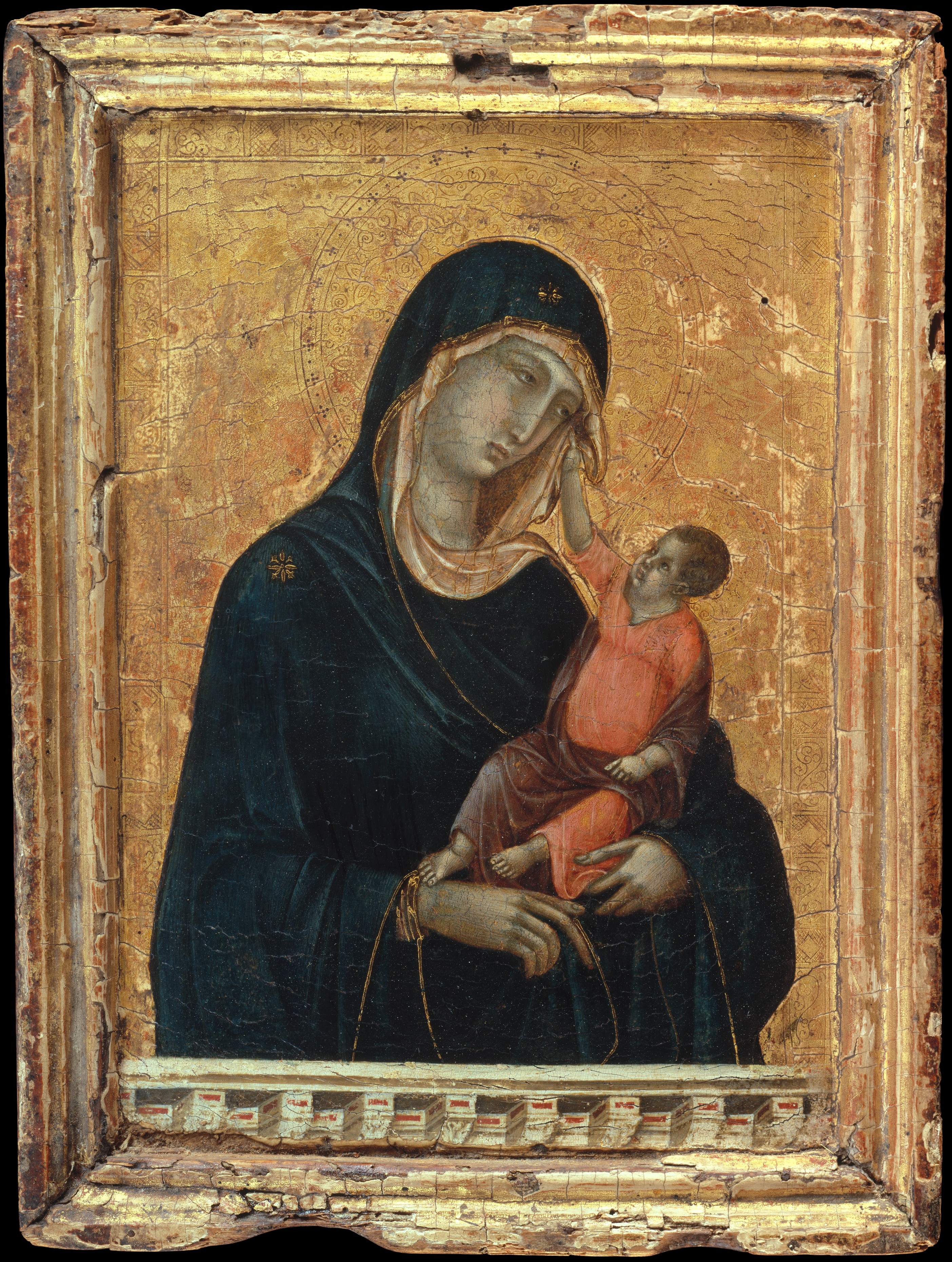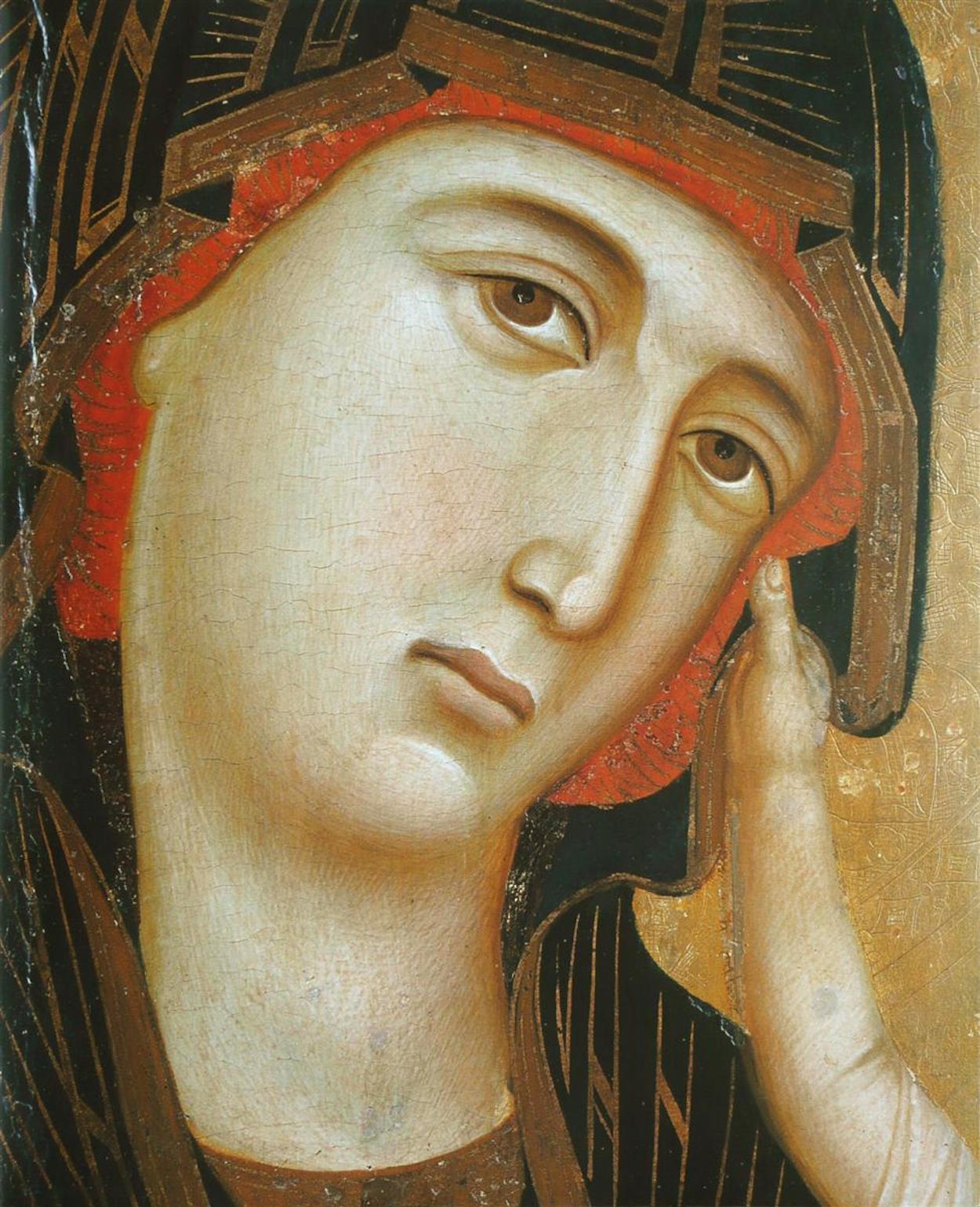This work of art was painted by one of the most influential artists of the late 13th and early 14th centuries, Duccio di Buoninsegna. This iconic image of Madonna and Child, seen throughout the history of Western art, holds significant value in terms of stylistic innovations of religious subject matter that would continue to evolve for centuries.
Duccio is the founder of Sienese painting and one of the great figures of Western art. This lyrical work inaugurates the grand tradition in Italian art of envisioning the sacred figures of the Madonna and Child in terms appropriated from real life. The Christ Child gently pushes away the veil of his mother, whose sorrowful expression reflects her foreknowledge of his crucifixion. The beautifully modeled drapery enhances their three-dimensional, physical presence and the parapet connects the fictive, sacred world of the painting with the temporal one of the viewer. The bottom edge of the original frame is marked by candle burns.
The painting was excitingly acquired in the autumn of 2004 by the Metropolitan Museum of Art for an estimated amount of 45 million USD. This is a highly valuable acquisition not only for the aesthetic significance in terms of the history of art, but also because there are only 13 known paintings by Duccio in the world.


 Duccio di Buoninsegna
Duccio di Buoninsegna